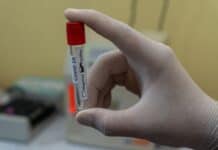 The Coronavirus Aid, Relief, and Economic Security Act, the $2.2 trillion federal program known as the CARES Act, isn’t the panacea many hoped it would be.
The Coronavirus Aid, Relief, and Economic Security Act, the $2.2 trillion federal program known as the CARES Act, isn’t the panacea many hoped it would be.
Many report difficulties getting through, the inability to register, and a lack of concrete answers regarding the CARES Act.
One of the provisions of the CARES Act is the Paycheck Protection Program or PPP that are forgivable loans to keep workers on the payroll. Criteria to be eligible for the loans include not having more than 500 employees; principal place of business is in the United States, and operational as of February 15, 2020.
How much can you get? You can borrow up to your average total monthly payroll costs during the one year immediately before the loan multiplied by 2.5.
Lenders started processing loan applications on April 3, 2020, and will be available through June 30, 2020.
At present, there is a face-off in the Senate as Republican leaders want to give the PPP a $250 billion boost. Democrats are blocking this attempt as they feel it should be spread across various programs.
For those who have applied, one caveat to keep in mind is if you are caught using loan proceeds for things not related to payroll costs, you will have to pay it back.
To find a list of lending institutions that are participating, click here and for the application and details here.
According to the National Federation of Independent Business (NFIB), about 70% of small business owners tried to apply for the loan with varying degrees of success. Of the 30% who have not actively tried to apply, one-third of them plan to in the next month, and 36% are considering it.
About 72% of those who tried to apply for a PPP loan were successful in submitting their application. However, some banks are pre-screening applicants before having them fill out the full application, so it is unclear how many have successfully applied or have just completed the first step in a longer process. Twenty-eight percent of small business owners were not successful in applying for a PPP loan.
Of the 28% of small business owners who were not successful, most of them (68%) are waiting for their bank to start accepting PPP loans. Nine percent of them are not able to find a participating bank, which is likely due to their own bank not participating. Five percent of owners trying to apply for the loan were told by their bank that it had hit their limit of accepting loans. This issue may have been eliminated on April 8, 2020, with the regulators allowing Wells Fargo to exceed their previously placed cap on loan origination. Another 5% found the process too complicated to proceed.
Meeting planners have had mixed results when applying for this funding.
“We’re trying to get the Payroll Protection loan, and thank goodness my banker knows us. It seems to be helpful to have a relationship with the bank or entity with whom you are applying.
That being said, she’s swamped. She also says the rules keep changing on them,” explains Christine Tempesta, president, KiddieCorp, a convention childcare provider that has been in business since 1986. “The bank’s most significant recommendation to all who apply is to make certain that the supporting documentation you submit along with your application fully ties in with the dollar amount of your loan. If it does not, you may be moved out of the queue, and this can hold up your application.”
Tempesta has not submitted yet but has all her documents together. “It’s just the worksheet that’s a bit of a puzzle and corralling my banker. I feel like I’m close,” adds Tempesta.
Sue Walton, an independent planner who specializes in association management, has been trying to apply for a client that is a nonprofit organization to no avail. “I waited until Saturday night as I thought there would be less traffic on the site. Unfortunately, after two screens, I kept getting locked out,” explains Walton.
David Bruce, managing director of CMP Meeting Services, and founder and executive director of the Alliance of Independent Meeting Professionals (AIMP) has applied for PPP as well as Emergency Fund monies of $1,000 per employee.
“Just trying to stay alive,” says Bruce. “My losses are $200,000 and losses for the association as a whole, probably $100 million.”
He reports that he may be able to get $30,000 back. That is a loss of $170,000.
What he does hope is that he will be able to include the loss as a line item on his taxes.
“A lot of this is well-intentioned, but it is very difficult to do very quickly. I don’t believe independent planners are going to reap the benefits,” adds Bruce.
He has been and plans to continue, lobbying for additional funding. “It’s going to take a great deal of lobbying from the USTA and organizations like ours. We must be a united front.”










